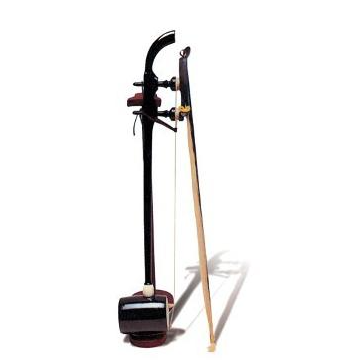Xi Qin overview
 Xiqin (pinyin: xī qín), also known as Erhu, originated in the Tang Dynasty. Xiqin can play all kinds of music flexibly, with cadence and rhythm, continuous and free, and can vividly express various emotions such as joy, anger, sadness, music, etc., especially the portamento played by it, which is almost the reproduction of language voice.
Xiqin (pinyin: xī qín), also known as Erhu, originated in the Tang Dynasty. Xiqin can play all kinds of music flexibly, with cadence and rhythm, continuous and free, and can vividly express various emotions such as joy, anger, sadness, music, etc., especially the portamento played by it, which is almost the reproduction of language voice.Xiqin, a stringed instrument. Began in the Tang Dynasty, also known as Ji (tongxi) qin. It has a long history and simple shape. The pronunciation is soft and the timbre is pleasant. Can be used solo, ensemble, or to accompany song and dance.
The traditional Xiqin is similar in shape to the midrange banhu of the Han nationality, but the qin barrel does not use coconut shells. It is composed of a piano tube, a piano rod, a peg, a jin, a bridge, a string and a bow, and the total length is 80 cm to 84 cm.
- Chinese name:Xi Qin
- alias:Erhu
- Origin:China
- origin:Tang Dynasty, China
overview of other similar instruments
- sanyanxiao overview
- Daguangxian overview
- Leiqin overview
- hahao overview
- yandundagu overview
- Han Xiaozheng overview
- Fang Xiang overview
- guanzi overview
- zhuqin (Dao Qin) overview
- zhuiqin overview
- bangzi overview
- three-stringed piano overview
- Gehu overview
- xiao overview
- xiaokonghou overview
- Konghou overview
- Sheng overview
- suona overview
- hulusi overview
- gushao overview
 渝公网安备 50010702504639号
渝公网安备 50010702504639号